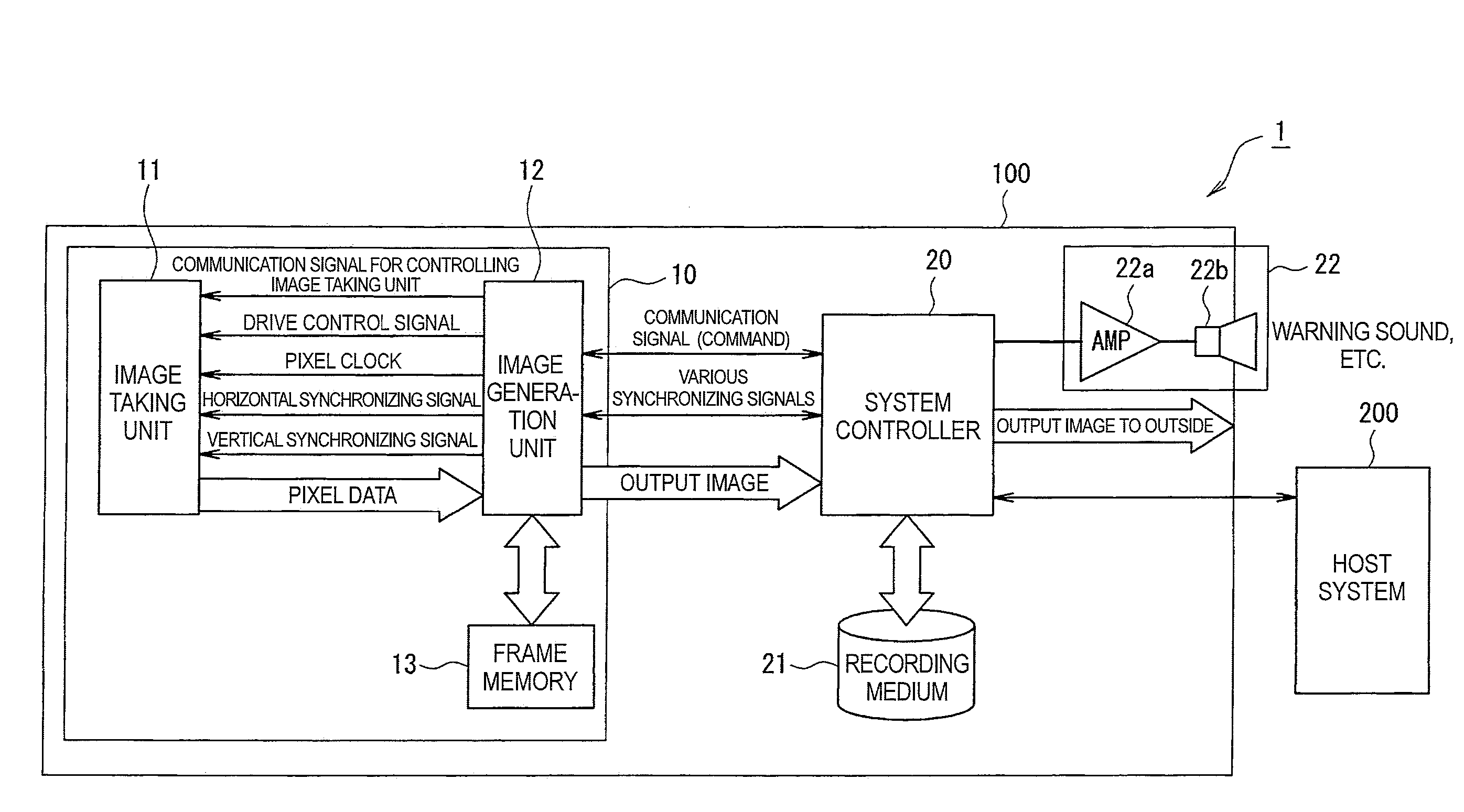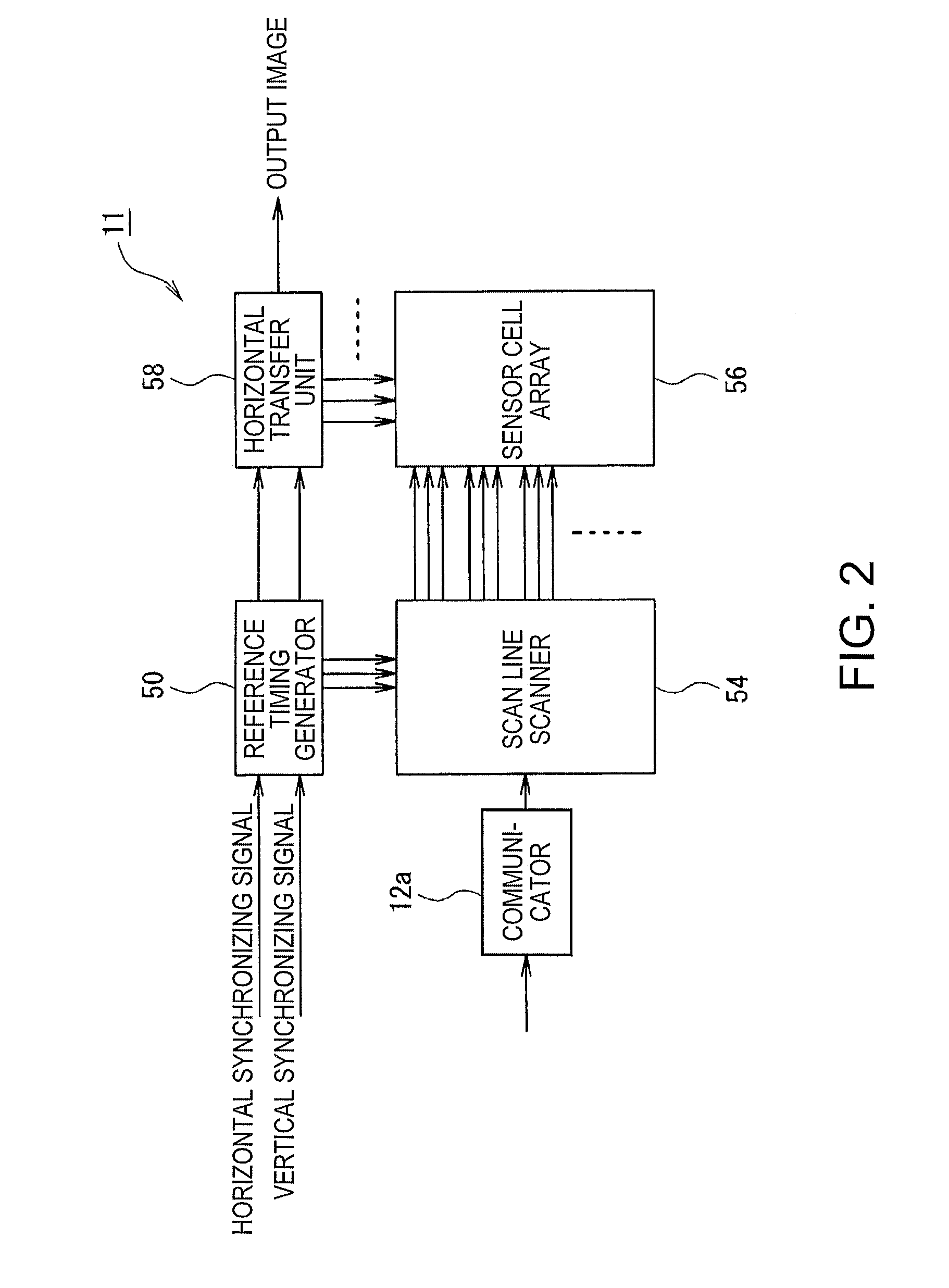Image taking apparatus and image recorder
a technology of image recording and image processing, applied in the field of image sensors, can solve the problems of increasing probability, short exposure time, and no description about a specific exposure timing (interlaced step), and achieve the effect of accurately taking an imag
- Summary
- Abstract
- Description
- Claims
- Application Information
AI Technical Summary
Benefits of technology
Problems solved by technology
Method used
Image
Examples
first embodiment
[0051]Now, an image taking apparatus and an image recorder according to a first embodiment of the invention will be described with reference to the accompanying drawings. FIGS. 1 to 10 are diagrams showing the image taking apparatus and image recorder according to this embodiment.
[0052]Referring now to FIG. 1, an outline configuration of an image taking system 1 according to this embodiment will be described. FIG. 1 is a block diagram showing an outline configuration of the image taking system 1 according to this embodiment. As shown in FIG. 1, the image taking system 1 includes an image recorder 100 and a host system 200. The image recorder 100 and host system 200 are coupled to each other so as to communicate data to each other.
[0053]The image recorder 100 includes an image taking apparatus 10 for taking an image of a subject, a system controller 20 for recording image data generated by the image taking apparatus 10 and determining information about interlaced scanning, a recordin...
second embodiment
[0156]Hereafter, an image taking apparatus and an image recorder according to a second embodiment of the invention will be described with reference to the accompanying drawings. FIG. 11 is a diagram showing the image taking apparatus and image recorder according to this embodiment.
[0157]The configuration of an image taking system according to this embodiment is similar to that of the image taking system 1 according to the above-mentioned first embodiment except that a method for dividing the light receiving area according to this embodiment is different from that according to the first embodiment.
[0158]The area division method according to this embodiment is suitable for a case where the exposure time is extremely small (e.g., a case where the division area number is small, e.g., 2 or 3, in the first embodiment), information about the flashing cycle of a flashing light source is known, and the time during which the light source lights up is equal to or longer than the time during wh...
PUM
 Login to View More
Login to View More Abstract
Description
Claims
Application Information
 Login to View More
Login to View More - R&D
- Intellectual Property
- Life Sciences
- Materials
- Tech Scout
- Unparalleled Data Quality
- Higher Quality Content
- 60% Fewer Hallucinations
Browse by: Latest US Patents, China's latest patents, Technical Efficacy Thesaurus, Application Domain, Technology Topic, Popular Technical Reports.
© 2025 PatSnap. All rights reserved.Legal|Privacy policy|Modern Slavery Act Transparency Statement|Sitemap|About US| Contact US: help@patsnap.com



